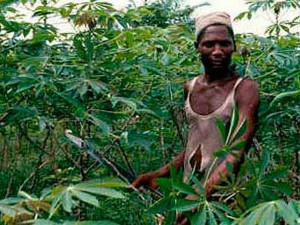
Cassava, which is the third-most important source of calories in the tropics after rice and maize, has huge potential and could turn from “a poor people’s food into a 21st century crop” if grown according to a new environmentally friendly farming model, the Food and Agriculture Organization said on Tuesday, May 28, 2013. PHOTO FROM FAO.ORG
ROME—Cassava has huge potential and could turn from “a poor people’s food into a 21st century crop” if grown according to a new environmentally friendly farming model, the UN food agency said on Tuesday.
The Rome-based Food and Agriculture Organization (FAO) said in a report that global cassava output has increased by 60 percent since 2000 and that yields could be boosted by up to 400 percent.
Cassava has “huge potential,” the FAO said.
The trick is to use the “Save and Grow” approach that does away with the use of heavy chemical inputs, and minimizes soil disturbance caused by traditional tilling methods such as plowing.
The approach encourages mixed cropping and crop rotation and does away with chemical pesticides.
Trials in Vietnam saw farmers increase production from 8.5 tons to 36 tons, the FAO said.
Cassava has also yielded “spectacular results” in the Democratic Republic of Congo and Colombia.
The FAO stressed its nutritional value, with roots rich in carbohydrates and leaves containing protein, iron, calcium and vitamins A and C.
Other parts of the plant could be used as animal feed, with evidence showing livestock fed with cassava had good disease resistance.
It said increased demand was partly explained by high cereal prices since cassava is often used as an alternative to wheat or maize.
“With Save and Grow developing countries can thus avoid the risks of unsustainable intensification while realizing cassava’s potential for producing higher yields, alleviating hunger and rural poverty,” the report said.